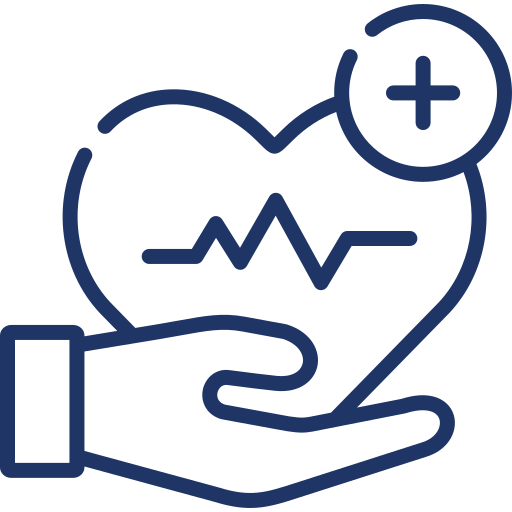Meningococcal disease is a serious and often fatal condition that can affect anyone at any age. It attacks the protective membranes and tissues around the brain and spinal cord. The disease often causes flu-like symptoms in the early stages, such as headache, fever, vomiting, and muscle aches. However, it can also lead to other more severe symptoms such as skin rashes, confusion, decreased blood pressure, joint pain, and seizures.
If you are worried about meningococcal disease or have questions about this condition, there is help available. In this guide, we will explore everything you need to know about meningococcal disease – from its symptoms to treatment options and ways to prevent it from occurring in the first place. Continue reading to learn more.
What is meningococcal disease?
Meningococcal disease is a serious and potentially life-threatening infection caused by the bacterium Neisseria meningitidis. This infection can affect the blood stream, brain, and spinal cord, and it is the leading cause of bacterial meningitis in the United States.
Although meningococcal disease is relatively rare, it can be fatal in up to 14% of cases, leading to serious complications such as permanent brain damage, hearing loss, amputations, and disabilities. It is most commonly seen in infants under one year old, adolescents aged 16-21 years old, and people with certain medical conditions that affect the immune system or prevent the body from producing adequate numbers of antibodies.
What are the symptoms of meningococcal disease?
Symptoms of meningococcal disease may appear suddenly. An infected person may become seriously ill very quickly.
Signs of meningococcal disease include:
- A sudden high fever
- Headache
- Stiff neck (meningitis)
- Nausea and vomiting
- Red-purple skin rash
- Weakness and feeling very ill
- Eyes sensitivity to light
How fast does meningococcal rash spread?
Meningococcal rash usually progresses quickly, over a few hours. It starts as small, red spots on the chest and stomach, and then spreads to the neck, arms, legs, and face. The spots may turn purple or brown as they fill with blood.
How is meningococcal disease spread?
Meningococcal disease is most commonly spread person-to-person through exposure to respiratory and throat secretions, such as coughing or kissing. Additionally, sharing food, drinks, cigarettes, or lipstick can also put you at risk of contracting this disease. It poses a particular threat to those who have frequent close social contact with others, such as those living in the same household or sharing a dorm room.
To protect yourself from contracting meningococcal disease, it is important to take proper hygiene precautions at all times and be mindful of your interactions with others.
How long does it take to get meningococcal after exposure?
It usually takes between two and ten days for someone to develop meningococcal disease after being exposed to the bacteria. However, in some cases, it can take up to 21 days for symptoms to appear.
Who is at risk for meningococcal disease?
Anyone can contract meningococcal disease, but some groups are at a higher risk than others. This disease occurs more often in people who are:
- Teenagers or young adults
- Infants younger than one year of age
- Living in crowded settings, such as college dormitories or military barracks
- Traveling to areas outside of the United States, such as the “meningitis belt” in Africa
- Living with a damaged or missing spleen or have sickle cell disease
- Living with persistent complement component deficiency of who take a complement inhibitor (Soliris or Ultomiris)
- Exposed during an outbreak
- Working with meningococcal bacteria in a laboratory
In addition, certain people are at increased risk for meningococcal serogroups A, C, W, and Y but not serogroup B. These include travelers to regions where meningococcal disease is more common (such as sub-Saharan Africa) and people living with HIV.
How can you prevent meningococcal disease?
According to the Centers for Disease Control and Prevention, the most effective way to prevent meningococcal disease is to get vaccinated. There are two types of meningococcal vaccines available: meningococcal conjugate vaccine or MenACWY vaccines and Serogroup B meningococcal or MenB vaccines.
The meningococcal conjugate vaccine is recommended for all people aged 11-18 years old, as well as those with certain medical conditions that put them at a higher risk for meningococcal disease. The meningococcal B vaccine is recommended for people aged 10 years or older who are at an increased risk for meningococcal disease.
In addition to vaccination, there are other steps you can take to prevent meningococcal disease:
- Practice good hygiene, including washing your hands often and avoiding sharing food, drinks, or cigarettes.
- Do not smoke.
- Avoid close contact with people who are sick.
- Stay up-to-date on your vaccinations. In addition to the meningococcal vaccine, you should also get vaccinated against influenza and pneumococcal disease.
- If you are traveling to an area where meningococcal disease is more common, take precautions to protect yourself, such as getting vaccinated and avoiding close contact with people who are sick.
What is a meningococcal vaccine?
A meningococcal vaccine is a vaccine that protects against meningococcal disease, which is caused by the meningococcus bacteria. There are two types of meningococcal vaccines available: meningococcal conjugate vaccine (MenACWY) and meningococcal B vaccine (MenB).
MenACWY vaccines are given in the leg muscle of a young child or the deltoid muscle of an older child or adult. MenB vaccines are given in the deltoid muscle.
Is a meningococcal vaccine required?
Meningococcal disease is a serious condition that can have devastating effects on those who contract it, particularly young people. Many colleges and summer camps require students or campers to receive a meningococcal vaccine before moving into a dorm or attending the program. This is because one-third of those who get meningococcal disease are teenagers and young adults, and up to 15% of those who are sick with the condition will die, even with treatment.
Furthermore, as many as 20% of those who survive may be left with life-altering side effects such as hearing loss or brain damage. Because of these alarming statistics, it is clear that getting the meningococcal vaccine can help prevent this serious disease from occurring in the first place.
When is meningococcal vaccine given
The CDC recommends routine MenACWY vaccination for:
- All preteens and teens at 11 to 12 years old with a booster dose at 16 years old
- Children and adults at increased risk for meningococcal disease
CDC recommends routine MenB vaccination for:
- People 10 years or older at increased risk for meningococcal disease
How many meningococcal vaccines are required?
For MenACWY vaccines, the number of doses recommended depends on the age of the recipient and the presence of certain medical conditions or risk factors. One dose of MenACWY should be administered to every adolescent at the age of 11 or 12 and a booster at the age of 16 years old. Teenagers who were vaccinated with MenACWY at age 13 through 15 years must have a booster dose at age 16 through 18 years (at least 8 weeks after the first dose).
A MenACWY booster dose should be administered to first-year college students who are or will be living in a residential facility. A catch-up dose of MenACWY can be given to adolescents and young adults between the ages of 19 and 21 who did not receive a dose after their 16th birthday.
Those with a damaged or missing spleen, people with HIV infection, or those taking complement inhibitors (Soliris or Ultomiris) may require more than one dose. The booster dose of MenACWY should be administered every 5 years to vaccinated individuals who are still at risk.
How long does the meningococcal vaccine last?
The meningococcal vaccine provides long-lasting protection against meningococcal disease. However, it is important to note that there are different types of meningococcal vaccines available, and each one offers different duration of protection.
The MenACWY vaccine offers protection against four different serotypes of meningococcus bacteria: serotypes A, C, W, and Y. The vaccine is typically given in a two-dose series, with the first dose administered at 11 to 12 years of age and the booster dose given at 16 years of age. The MenACWY vaccine offers protection for up to 8 years after vaccination.
The MenB vaccine offers protection against serotype B meningococcus bacteria. The vaccine is typically given in a two-dose series, with the first dose administered at 10 years of age and the booster dose given at 16 years of age. The MenB vaccine offers protection for up to 4 years after vaccination.
What is the difference between meningococcal and meningitis?
Meningococcal disease is a serious bacterial infection that can lead to meningitis, septicemia, or both. Meningitis is an inflammation of the meninges, the membranes that surround the brain and spinal cord. Septicemia is a blood infection. Both meningitis and septicemia can be life-threatening and require immediate medical treatment.
Meningitis is a serious disease that can be deadly if left untreated. The main symptoms of meningitis include a high fever, severe headache, nausea, and stiff neck. In more extreme cases, the disease may cause permanent brain damage or even death.
While there is no meningitis cure, the meningococcal and meningitis vaccine can help prevent infection. This vaccine works by exposing patients to minute amounts of the bacteria that causes the disease in order to build up their immune systems and protect against infection. Additionally, early diagnosis and treatment are key in managing and ultimately beating the disease.
Meningococcal disease is caused by the meningococcus bacteria. There are five different types of meningococcus bacteria: A, B, C, W, and Y. Meningococcal vaccines are available to protect against all five types of meningococcus bacteria.
Where to get meningococcal vaccine
When it comes to getting the meningococcal vaccine, your doctor is usually the best place to turn. This vaccine is part of the recommended routine childhood immunization schedule, and it is widely available at pediatric and family practice offices, as well as community health clinics and public health departments. Whether you are looking to protect yourself or your child from this potentially dangerous infection, a range of options makes it easy to find the right place for you or your family.
Stay ahead of the meningococcal disease
Meningococcal disease is a serious and potentially deadly infection, but it is also preventable. If you or your child has never been vaccinated against meningococcal disease, or if it has been more than five years since the last dose of vaccine, simply head to your nearest Nao Medical urgent care center and let our experienced medical staff take care of the rest. With our expert knowledge and advanced technology, you can be sure that you’ll be safe from any serious disease.
 (917) 310-3371
(917) 310-3371


